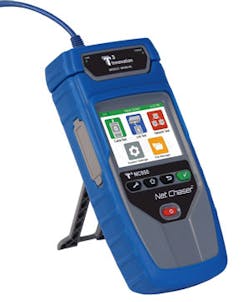Network testing: 5 tips for beginners
Regular network testing is a critical element of maintaining a well-performing system, identifying potential problems before they cause serious malfunctions, and preparing for future improvements to keep up with changing technology. Embarking on this adventure should not be taken lightly, and that means the first step for beginners is to have a plan of attack. The following strategies, as outlined by T3 Innovation, are applicable to networks regardless of type.
1. Bring a Map
Before you make any adjustments or begin hunting down an error, you need to familiarize yourself with the structure of the network. This includes all connected devices, wireless access points, switches, routers, cables, dongles, and dingles. If it has an IP address, MAC address, or otherwise interacts with the network, you should be aware of its existence. Without this map, using the tests to determine the system health becomes much more difficult as you fumble around in blindness. You can make this step easier in the future by keeping track of network changes as they are applied, but a full sweep should be performed regularly.
2. The Need for Speed
After mapping the network, it's time to begin checking the levels. More than anything else, the speed of data transmission is the first variable to suffer from the wear and tear of hauling Youtube videos around the clock. Each connection in the network should have its links assessed; failure to do so could allow a bottleneck to go unnoticed. If the speed is up to code, the next check to make is for signal noise. The low voltages used to transmit data over Ethernet cables are incredibly sensitive to electromagnetic radiation, crosstalk, and other induced signals. A delay in what looks like a perfectly functioning cable could be an indication of the noise causing packet loss and the network automatically resending the information without providing an outward indication of the problem aside from the slowdown.
3. Test, Rinse, Repeat -- The Half-Splitting Method
If you identify a connection problem in the network, the root cause will either be a piece of hardware or the configuration of the software. Begin working down the map half-splitting between the origin of the signal and the located error. "Half-splitting" is just testing at the midpoint between the originating point and the point of error to efficiently narrow down the possible causes until the actual location is identified. If the error isn't present at the halfway point, you can generally assume the problem occurs after it; if the error shows, the cause is either at or before the midpoint.
4. Remember Your Journeys
Every time you solve a problem in an existing network, make a special note of it in any report you file for yourself or your company. An error that occurs in the same location has at least a chance of being caused by the same issue, creating a short list of suspects for you to question before resorting to the more thorough method. Tracking the past problems is as essential as maintaining your map for preparing to delve back into an already explored network.
5. The Right Tools for the Job
For every step from searching the corners of the network to identifying errors in the links, the Net Prowler and Net Chaser from T3 Innovation have the capability to turn the technical task into a trivial occasion. The "prowling" software will detect the layout of the network, help match IP addresses to the physical cables that carry their signal, test the speed of the connections, and perform checks on the physical equipment.
Source:Utility Products
